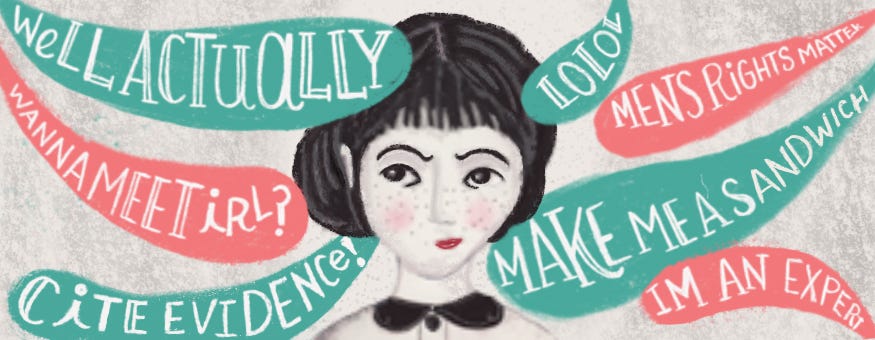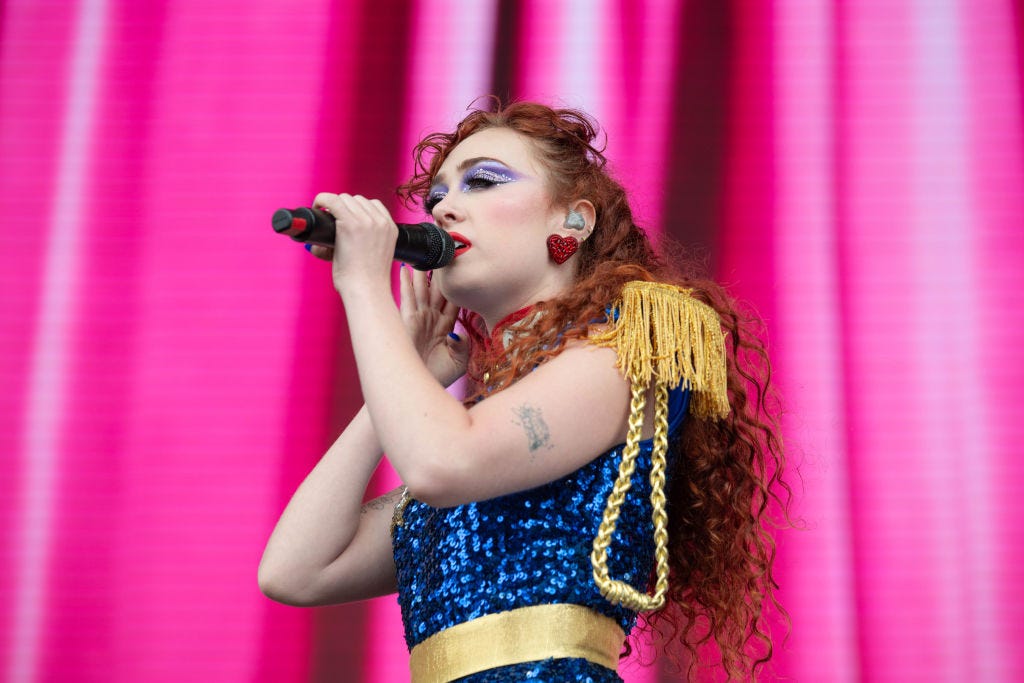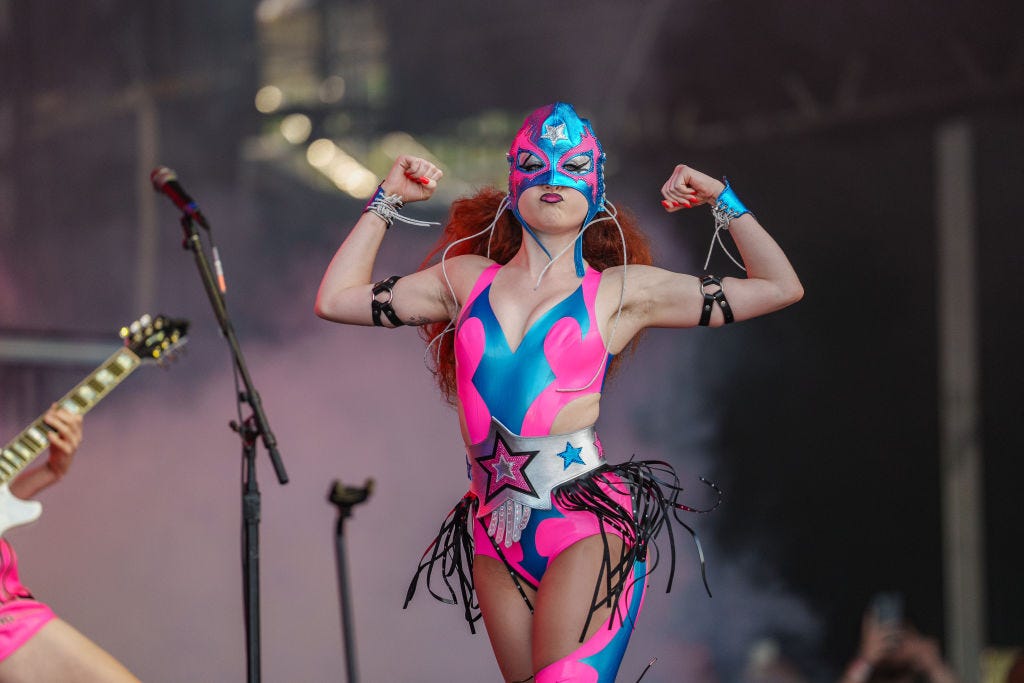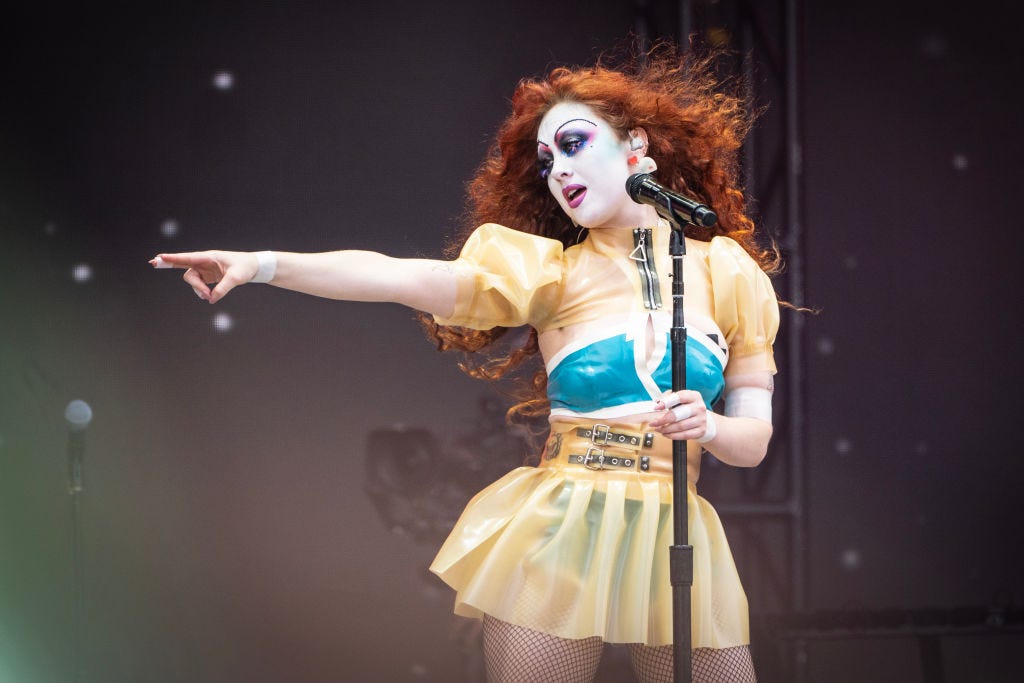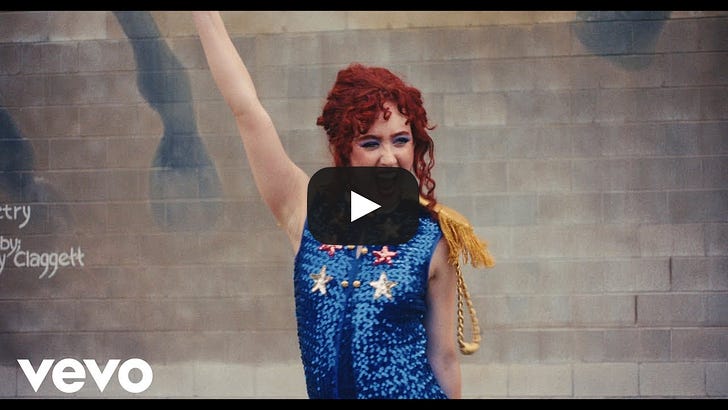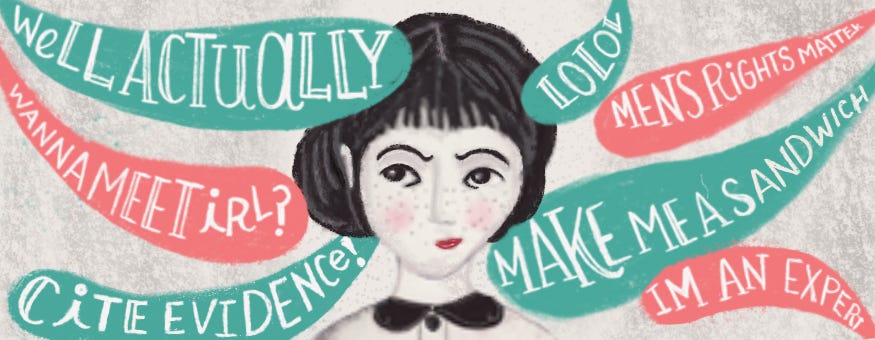This week’s newsletter is written by Keaton Fuller. Keaton is the creator, writer, and director of the show Friendly Faces. He is a graduate of the University of Iowa and lives in Cedar Rapids. Keaton’s writing is featured in this newsletter thanks to subscribers who make it possible for me to pay writers an above-market rate. As a result, I can offer different perspectives on the Midwest and what it means to live here without exploiting anyone’s labor. For nearly a year, I’ve been unable to shake Chappell Roan’s The Rise and Fall of a Midwest Princess. A great pop album often serves as an escape. Through shimmering pop synths, I’ve processed breakups, a global pandemic, emotional abuse and even the destruction of a beloved 12-foot Home Depot skeleton during a windstorm. But since its release, Midwest Princess has served not as an escape for me, but a reexamination of my identity and journey as a queer person who has chosen to make the Midwest my home. In the opening track of the album, Roan starts out with slowly building strings and a wail “‘bout his girlfriend back in Boston.” It almost sounds like something from the drowsy 2017 EP that got her dropped from her first label. But then she asks the sacred question. “Umm. Can you play a song with a fucking beat?” From that point on, she kicks the album into overdrive. Several years before she would take her crown as a Midwest pop princess with a bombastic drag persona, Chappell Roan landed a record deal that resulted in a handful of quickly forgotten songs. Hearing passionate, sequin-studded hits like Red Wine Supernova and Good Luck, Babe!, you’d never guess the same person produced the watered-down tracks on School Nights. It’s not that the songs are bad, but they are clearly the work of someone imitating commercially successful artists they admire in the hopes of being taken seriously. It took her leaning into both her queer identity and her Midwestern identity for her career to fall into place. “I found my queerness and my identity through the imagery of the album,” she told pop culture podcast Q with Tom Power. When Time asked her about the Midwest, she explained, “There’s a lot of value in the culture and fashion and music that maybe a lot of like, “the fashion world” would not deem as valuable.” By staking her claim in her queer identity and the flyover places that made her, Chappell Roan found success. She took the dreary, Lana Del Rey-wannabe feel of her first EP and threw it in the trash. No more holding back on being a little silly for fear of not being taken seriously. She was ready to “get it hot like Pappajohns.” No more strategic use of pronouns to straight-code her way into a hit. She was reveling in the sapphic love of a “playboy Brigitte Bardot.” Now armed with “a wand and a rabbit,” she was fully ready to embrace being explicitly queer in her music. For many artists, this would have been the point in their artistry where they begin to celebrate their escape from a small-town trailer-park life. But Roan wasn’t just looking for success as a pop superstar. She wanted to bring all her Midwestern queers along with her. For many artists, this would have been the point in their artistry where they begin to celebrate their escape from a small-town trailer-park life. But Roan wasn’t just looking for success as a pop superstar. She wanted to bring all her Midwestern queers along with her. In an interview with Variety, Roan explains that the Midwest “influences the music, my fashion, my lyrics, the energy around it. It’s important for me to capture the Midwestern aspect. I don’t want to lose that part of me.” And that influence is baked into everything she does. The music video for HOT TO GO! sees her strutting around the rundown gas stations, drag strips, and mini golf courses of Springfield, Missouri, in full drag performing the song. By all logic, she should look completely out of place. Yet when you see the joy on her face, you know she is where she belongs. She is home. My early relationship with my own Midwestern hometown of Clinton, Iowa, had none of the self-love of dancing with drag queens in a glittery blue marching-band uniform like Roan. “I’m the most homophobic gay person you’ll ever meet,” I’d often say. I used this line for years with Midwestern straight people, and it killed every time. Punching down on my own community felt like the safest way to maintain the access I had to the straight spaces that surrounded me. For much of my adolescence into early adulthood, it felt like I had to choose between my Midwestern identity and my queer identity. Growing up in Iowa in a good Catholic family, the realization that I was gay came with no good reference points for what to do with that information. It was 2008, and I only knew of one other openly queer person one town over and I didn’t like him. It seemed that the best path forward was to do whatever I could to adapt to straight spaces. “I’m gay, but not one of those gays,” I’d say with a limp wrist. This phrase served as a golden ticket into putting straight people at ease while still being able to be openly gay. And for a while, it worked. I skated through my remaining years as the lone openly gay student at a small Catholic school. The promise of a future outside of the confines of Iowa fueled me forward. If pop culture had taught me anything, it was that as a queer person, I should constantly be working to shed the shackles of my simple small town so that one day I could bask in the cultured glow that only a coastal metropolis could provide. One day, I was texting a new work friend at a spirit-breaking data entry job. We were both gay and both in need of reassurance that our job situation was temporary. The topic of being gay came up and I rolled out the tried-and true-line. “I’m the most homophobic gay person you’ll ever meet.” A long pause. “Oh, yikes,” he replied. The back-and-forth quickly fizzled out. “Oh, yikes,” was right. My internalized homophobia was a lot less cute at 25 than it was at 16. Several months later, I found myself back in my own Midwestern hometown. Unsure where to go next, I was grappling with two newfound truths about myself. 1. I had been watering down my queer identity for the last decade. And 2. I didn’t want to escape Iowa; I wanted to make it my home. Fully embracing my queer identity and my home state felt like two contradictory desires. Iowa is the land of Kim Reynolds and incorporating ranch dressing into places it doesn’t belong (a controversial stance I’ve taken since almost gagging on a ranch-flavored cocktail). As far as I was concerned, queerness was limited to a handful of bars scattered across the state and the pickup trucks of closested guys who “promise not to tell if you won’t.” In a sea of pink cowboy hats and homemade crop tops, the venue transformed into a unique space where for one night, nobody was doing the internal math of calculating how queer-presenting it felt good and safe to be. We were all there for the same thing: to come home. And yet, I couldn’t seem to leave Iowa behind. I loved the Midwest. I love that we experience all four seasons even as I’m cursing the snow in the hellscape of January. I love that I have the choice between a loud, sticky dive bar on a Friday night or the complete silence of the countryside. I love a community that’s a manageable size where you accumulate local characters like you’re a Gilmore Girl. I love the physical proximity to my family, and didn’t want to sacrifice my authentic queer self to be close to them. There wasn’t a definitive moment where I popped out of a giant cake shaped like an ear of corn, dressed in a flowing, rainbow cape while This Is Me played in the background and I instantly joined my Midwest and queer identities. It happened slowly over several years. I started saying yes to invitations to queer events that I’d rebuffed in the past over “not wanting to make being gay my whole personality.” The inseam of my shorts got shorter as I stopped caring if “these clothes make me look gay” and just started wearing what I liked. All of these incremental changes over time made it clear that no place is ever going to feel like home if you are holding back from being your full self. You can’t sit around waiting for permission to embrace the parts of yourself you’re worried people won’t like. You just have to fucking do it. Any good Midwestern could tell you, “If you build it, they will come.” And if you look at the tour dates for the ever-expanding Midwest Princess tour, Chappell Roan is well aware of this fact. A tour with shows in LA and Paris also includes stops in Council Bluffs, Iowa, and Kalamazoo, Michigan. Her shows regularly enlist local drag performers as an opening act to hype up the crowd, turning each venue into a queer Mecca for one night only. This is a woman who understands that while she is in demand around the globe, the queer havens of her shows are needed back home. Every year, Iowa introduces a tidal wave of new bills that attack both the transgender community and the LGBTQ+ community as a whole. These bills work to isolate us, to make us ask ourselves, “What am I still doing here?” We mourn those who choose the leave, but also understand the decision. Queer-centric gatherings in the Midwest, whether they’re a protest, a pride festival, or a glitter-soaked concert for our favorite pop star singing about being “knee deep in the passenger seat” serve as a powerful reminder that there are still so many of us here and we are important assets to our communities. We are the communities. In March of this year, I got to attend a Chappell Roan concert in Des Moines, Iowa. With two of my best friends by my side, both queer women, I walked into the venue in pink go-go boots, a sheer tank, and the shortest shorts I could find. My outfit was almost subtle in comparison to the rest of the Midwestern queers around me. By holding her concert there, Chappell reminded us all that being both queer and Midwestern was nothing especially radical or unique. There was an entire sold-out crowd of us! In a sea of pink cowboy hats and homemade crop tops, the venue transformed into a unique space where for one night, nobody was doing the internal math of calculating how queer-presenting it felt good and safe to be. We were all there for the same thing: to come home
Men Yell at Me is a subscriber-supported newsletter. My mid-week and Friday newsletters will always be free. Paid subscribers can join in the vibrant community of activists, experts, and the kind of people that give you hope for America. Paid subscribers can comment, chime in on weekly threads, and join the Discord community where we make jokes about Iowa ham balls (IYKYK and IFYK you are probably in the Discord), we talk politics (don’t worry, it’s nice!) and debate gas station pizza. You can follow me on Instagram for dog pictures or on Twitter for takes too spicy for the Midwest. I’m also a freelance writer and author. You can find more of my work, here. |
